
Color, 1986, 93m. / Directed by Derek Jarman / Starring Nigel Terry, Sean Bean, Tilda Swinton / Cecchi Gori (Italy R2 PAL) / WS (1.66:1) (16:9)
When experimental director Derek Jarman was serving as production designer on 1973's The Devils, that film's director, Ken Russell, was already established as a radical master of the biopic, turning historical and pop culture personalities into grist for his own obsessions and visual quirks. Oddly, it
Told in a fragmented structure as recollections on the painter's deathbed, the story follows Caravaggio from boyhood to adulthood (played through most of the film by Excalibur's Nigel Terry). The crux of the film lies in his relationship with fighter Ranuccio (The Lord of the Rings' Sean Bean), the object of Caravaggio's lust, and the ruffian's girlfriend, Lena (Jarman regular Tilda Swinton), with whom he becomes involved in a destructive and ultimately violent threesome. We also see how the artist's youth was affected by an encounter with the Cardinal (horror favorite Michael Gough), who cautions him that his controversial work and behavior may have nasty implications, while the rest of church itself (represented by a young Robbie Coltrane!) is less than pleased with the hellraiser's antics.
Arguably the director's most approachable film, Caravaggio feels like a work more concerned with tone and texture than storytelling. The narrative does move in a coherent fashion if one is paying attention, but the succession of ravishing images ultimately overwhelms the senses to the extent that any character development is secondary. Jarman's usual idiosyncracies are in evidence, such as his injection of period anachronisms (modern formal dress, typewriters, and so on) at odd moments to provide modern analogies; however, the table-slamming politics which ultimately came to the forefront in Edward II (complete with a modern pride parade) are kept in check here in favor of a more subtle study of vascillating sexuality and the destructive nature of the human impulse. The acting is unusually passionate for Jarman, with the three leads all doing some of their most striking work; while Swinton and Bean have ultimately proven themselves many times over since, it's a shame Terry has mostly been relegating to supporting roles and TV work.
Color, 1977, 100m. / Directed by Derek Jarman / Starring Jenny Runacre, Toyah Willcox / Criterion (US R1 NTSC) / WS (1.66:1) (16:9), Second Sight (UK R0 PAL)
Though his death at the age of 52 passed with little fanfare, director Derek Jarman forever changed the way filmgoers look at the relationship between sound and image on film. A talented art director (The Devils), he began making short avant garde films and
While directors like Ken Russell and Julien Temple were giddily overturning the relationship between music and cinema during the 1970s, Jarman entered this tricky arena with his complicated, challenging look at a punked-out, pre-Thatcher England in Jubilee, which groups together an odd assortment of music and theater personalities for a one of a kind experience. The story, what little there is, concerns the journey of Queen Elizabeth I (Jenny Runacre) who, thanks to a ghostly white angel (Stage Fright's David Brandon), travels through time to a Britain torn apart by gangs and punk anarchy. Violence and sexual decadence are the order of the day for this crumbling land populated by a weird gallery of characters: Mad (pop singer Toyah Willcox), an aspiring singer with neon orange hair and baby fat who belts out her tunes in a blitzed out Buckingham Palace; Angel (Opera's Ian Charleson, who later disowned the film), a pansexual bleach blond youth; Amyl Nitrate (Jordan), a vicious female gang leader; and Kid (a very young Adam Ant), a leather-clad lad who becomes the object of several characters' fixations. Rocky Horror veterans Richard O'Brien (in wacked out period dress) and
Though he had dabbled with short films and helmed the relatively straightforward Sebastiane, Jarman really established his visual style here with a striking visual patchwork of Super 8 inserts, stream of consciosness editing, opulent costumes and sets, and abudant but unsettling nudity. The now legendary soundtrack remains one of the film's biggest selling points, but its chaotic spirit also endeared the film itself to several generations of university students and underground movie fanatics. All others might want to start somewhere else, as this is not the most easily accessible film in the art house canon; the shifts in time and rambling monologues can be daunting to the inexperienced, and those who find Kenneth Anger too heady will no doubt run screaming during the first ten minutes.
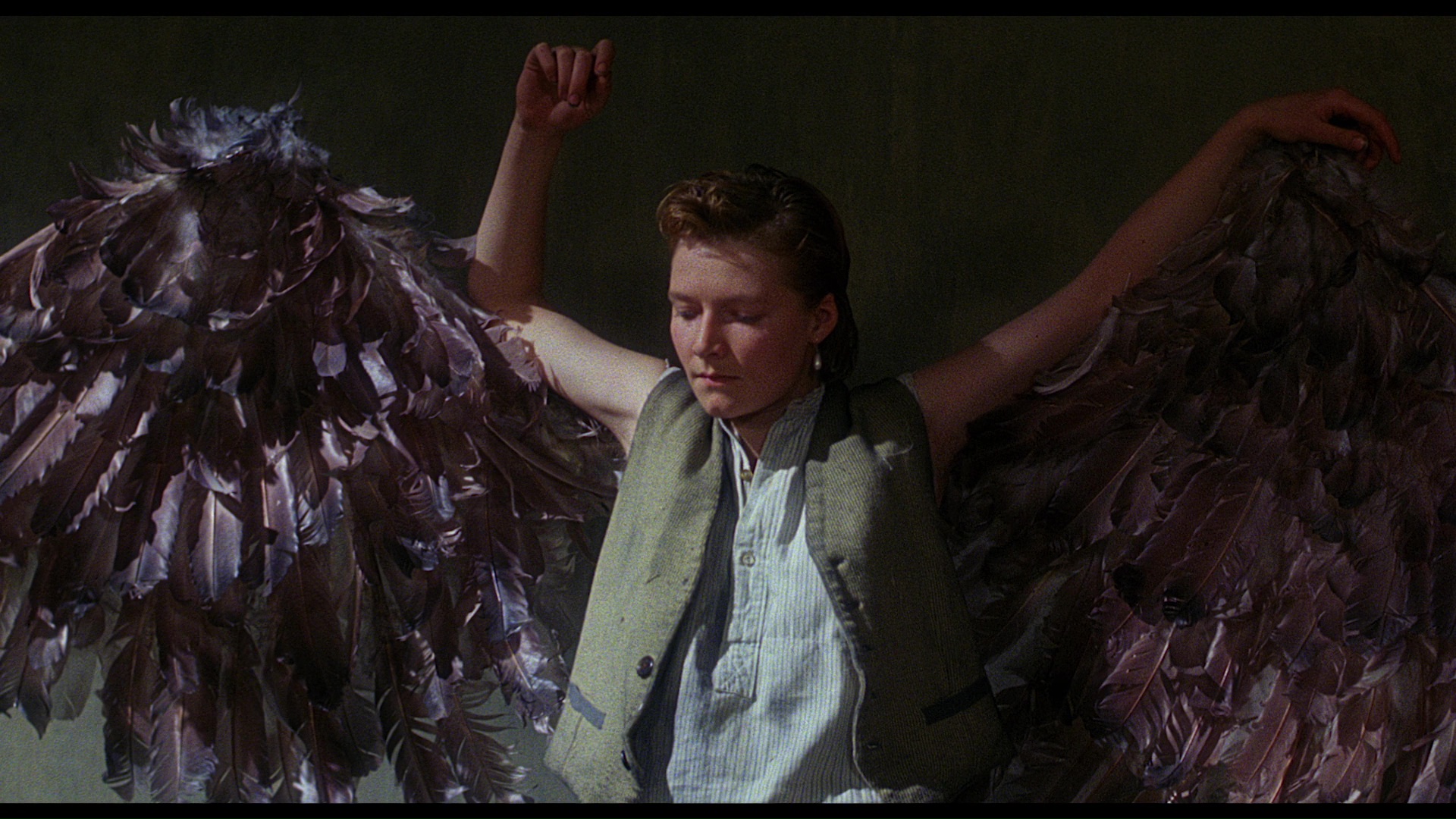 took Jarman over a decade to try his hand at the same approach with Caravaggio, a visually overwhelming examination of the famous painter who redefined the use of light in painting and scandalized the church by portraying sacred figures as dirty, commonplace peasants. Of course, the painter's life was no less remarkable; a ruffian prone to fighting, gambling, and copulating apparently every waking moment he wasn't holding a paintbrush, Caravaggio could be read in many ways as a prototype for today's modern celebrity.
took Jarman over a decade to try his hand at the same approach with Caravaggio, a visually overwhelming examination of the famous painter who redefined the use of light in painting and scandalized the church by portraying sacred figures as dirty, commonplace peasants. Of course, the painter's life was no less remarkable; a ruffian prone to fighting, gambling, and copulating apparently every waking moment he wasn't holding a paintbrush, Caravaggio could be read in many ways as a prototype for today's modern celebrity.
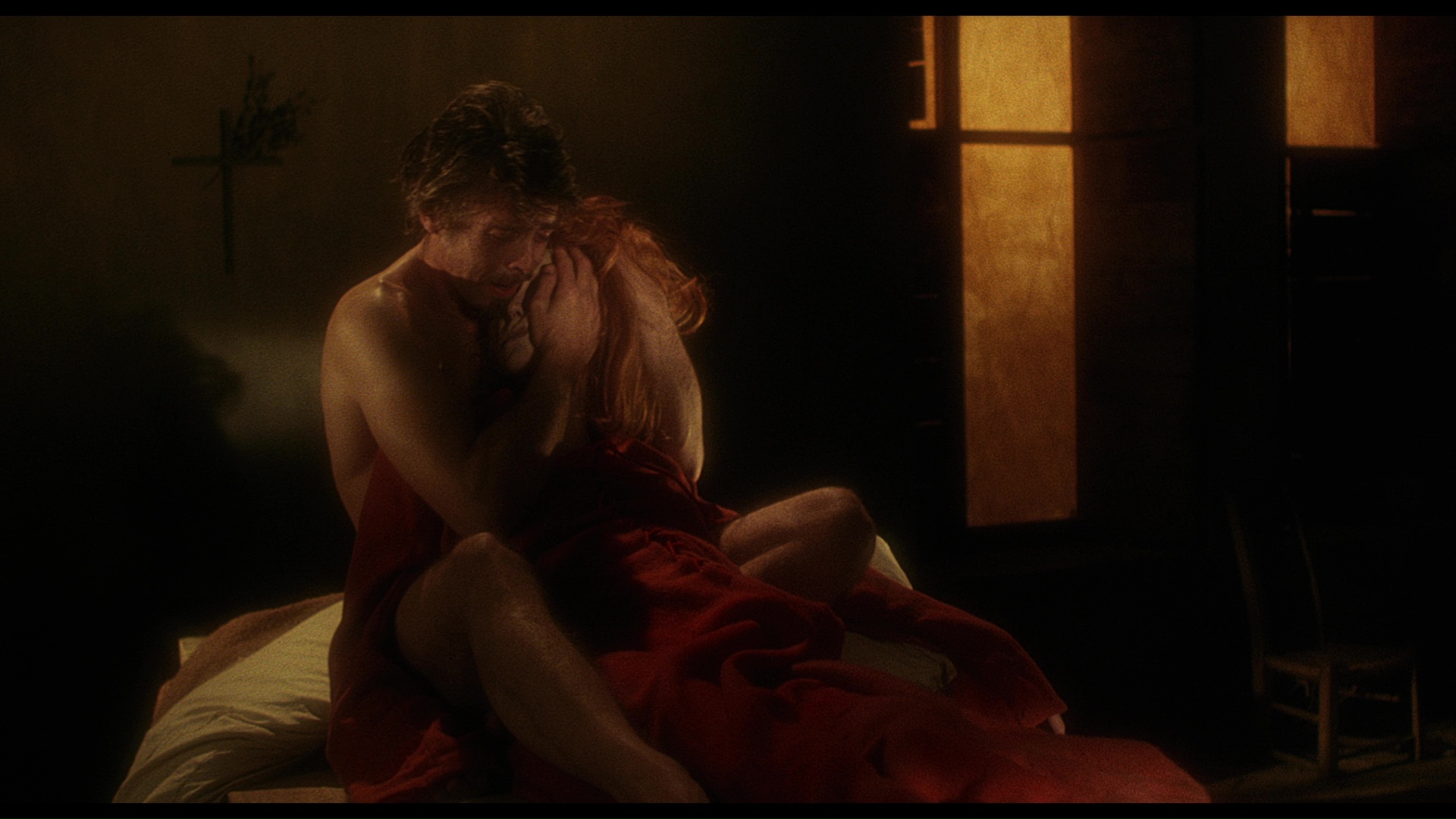
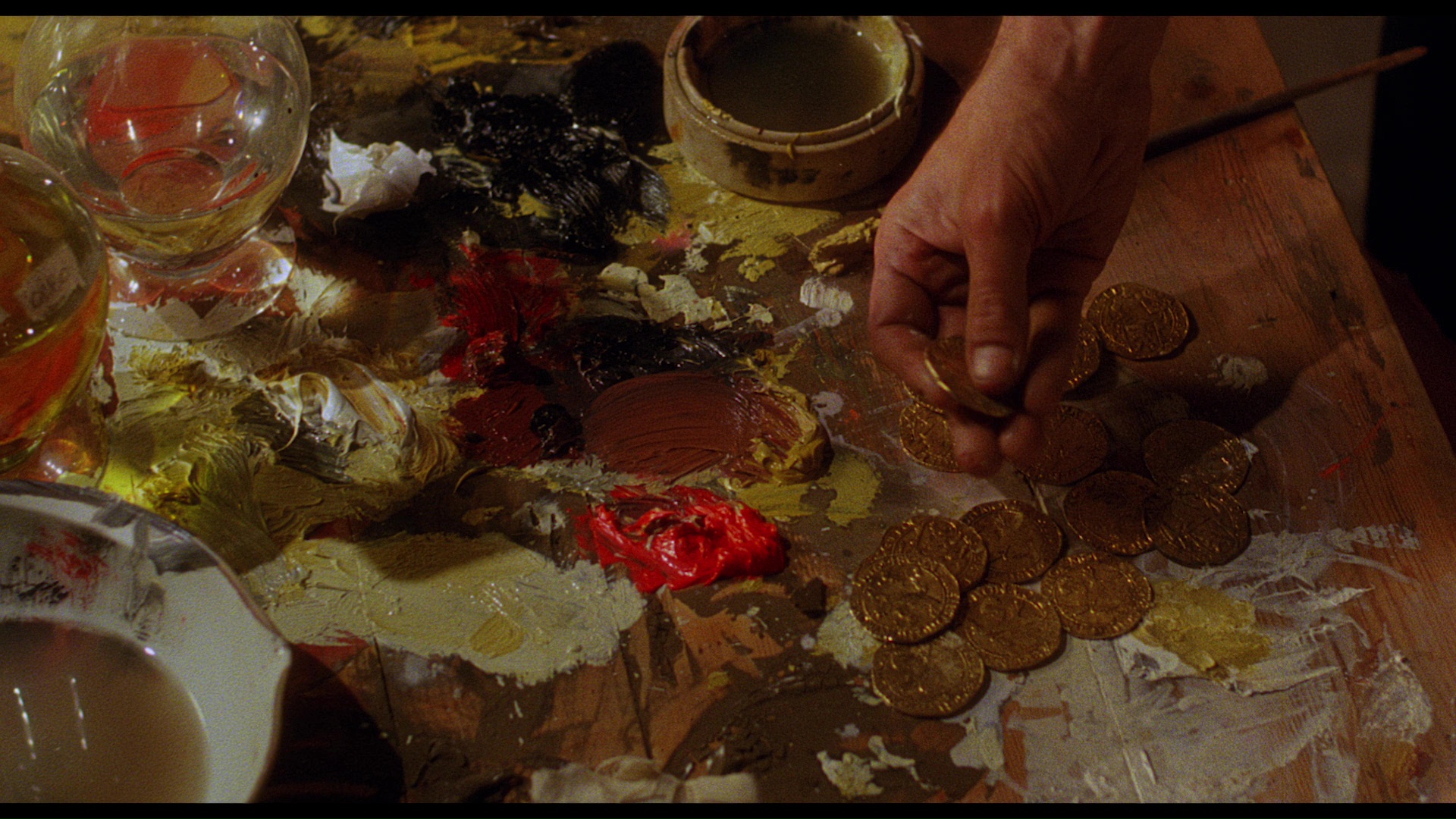 While videotape editions could scarcely hope to capture the rich imagery of this film, the Italian DVD at least comes within throwing distance of a theatrical experience but still comes up short in a few areas. The anamorphic transfer is detailed and features solid black levels, which are absolutely crucial here (considering the cinematography's aim to replicate the painter's use of chiaroscuro, the delicate shaping of darkness and light). However, some scenes still look a bit processed and digitized here and there, and some of the harsher edges of bright objects can look jagged with some compression flaws sometimes in evidence. Still, it's a huge leap over what we had before and will do until a special edition comes down the pike someday. Annoyingly, the English soundtrack plays with forced Italian subtitles on many players; however, as with most other Italian discs, these can be circumvented with a little technical savvy. An Italian-dubbed soundtrack is also included. Special features include the excellent theatrical trailer (identical to the one Cinevista circulated during the US theatrical run) and some text supplements in Italian. The disc is part of an ongoing series of significant Jarman releases on Italian DVD which includes The Angelic Conversation, Edward II, and Blue.
While videotape editions could scarcely hope to capture the rich imagery of this film, the Italian DVD at least comes within throwing distance of a theatrical experience but still comes up short in a few areas. The anamorphic transfer is detailed and features solid black levels, which are absolutely crucial here (considering the cinematography's aim to replicate the painter's use of chiaroscuro, the delicate shaping of darkness and light). However, some scenes still look a bit processed and digitized here and there, and some of the harsher edges of bright objects can look jagged with some compression flaws sometimes in evidence. Still, it's a huge leap over what we had before and will do until a special edition comes down the pike someday. Annoyingly, the English soundtrack plays with forced Italian subtitles on many players; however, as with most other Italian discs, these can be circumvented with a little technical savvy. An Italian-dubbed soundtrack is also included. Special features include the excellent theatrical trailer (identical to the one Cinevista circulated during the US theatrical run) and some text supplements in Italian. The disc is part of an ongoing series of significant Jarman releases on Italian DVD which includes The Angelic Conversation, Edward II, and Blue.

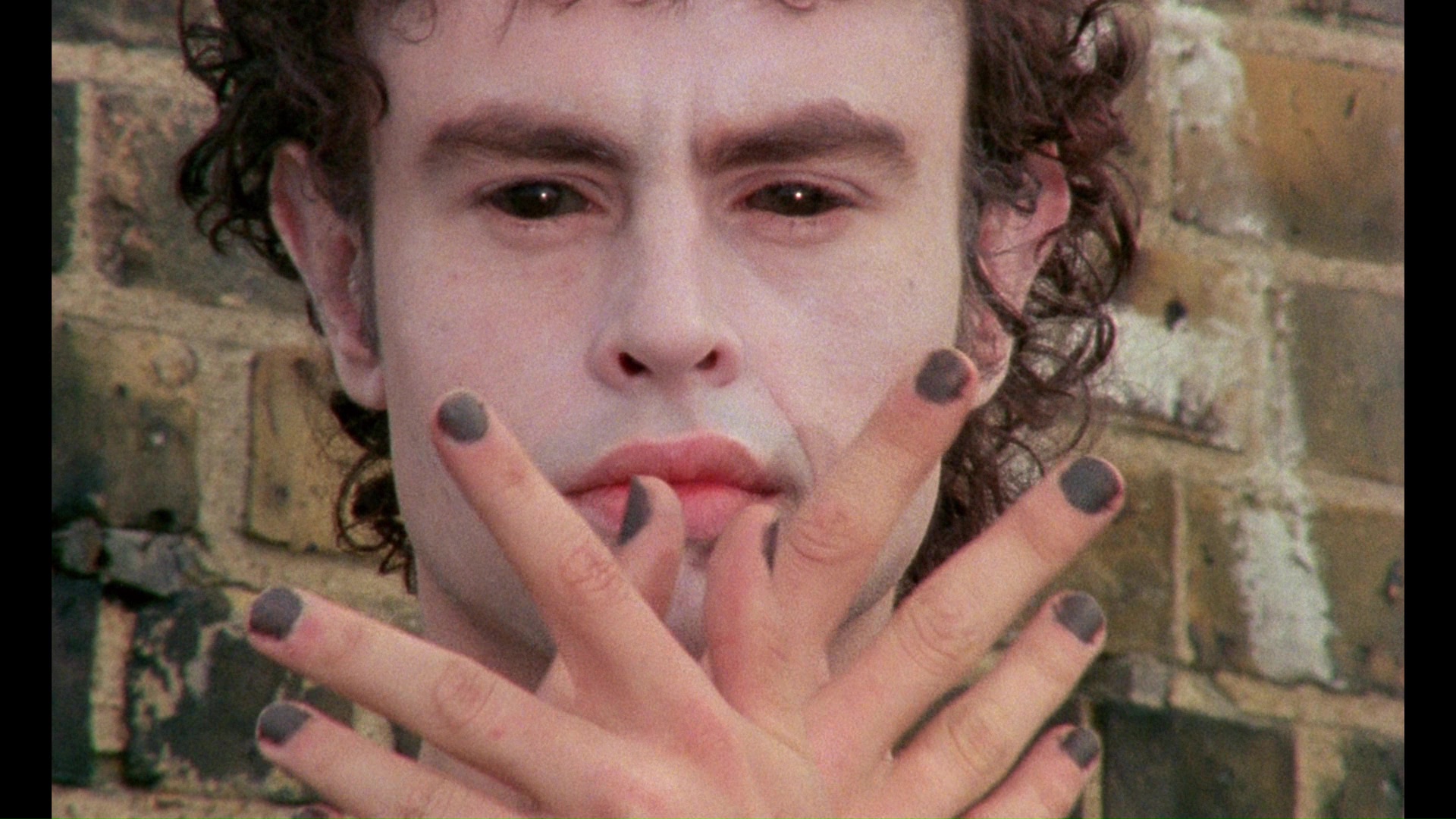 progressed to art house features like Sebastiane and The Last of England before achieving his one bona fide international hit, Edward II. In the meantime he also directed music videos and concert films for such bands as The Smiths and Pet Shop Boys, usually integrating his beloved Super 8 home movies for both visual texture and a personal statement of his longing for a simpler time.
progressed to art house features like Sebastiane and The Last of England before achieving his one bona fide international hit, Edward II. In the meantime he also directed music videos and concert films for such bands as The Smiths and Pet Shop Boys, usually integrating his beloved Super 8 home movies for both visual texture and a personal statement of his longing for a simpler time.
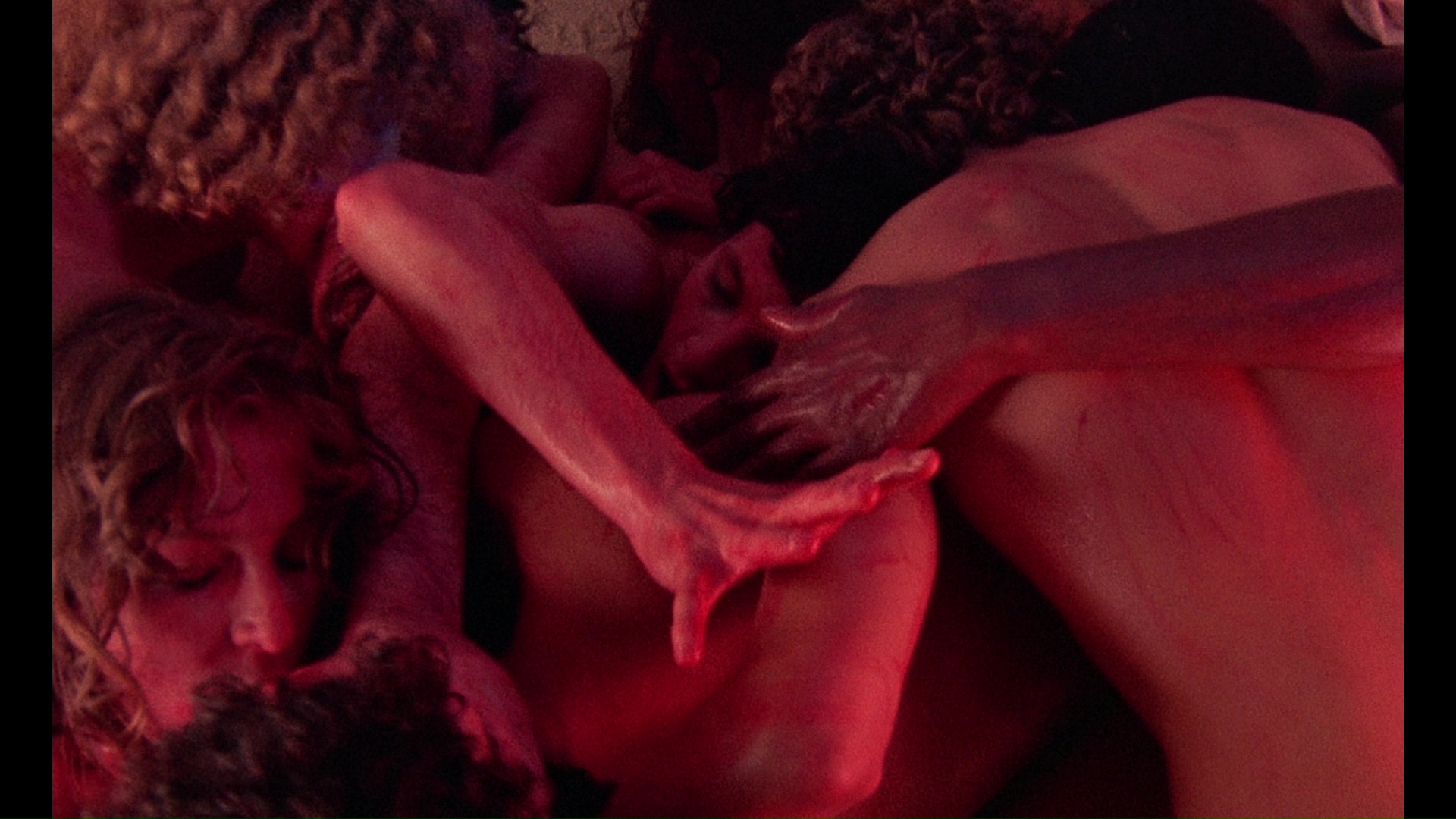 "Little Nell" Campbell also hop along for the ride, which includes a gruesome sexual asphyxia murder, rampant destruction of public property, a nightclub orgy, and some very catchy tunes.
"Little Nell" Campbell also hop along for the ride, which includes a gruesome sexual asphyxia murder, rampant destruction of public property, a nightclub orgy, and some very catchy tunes.
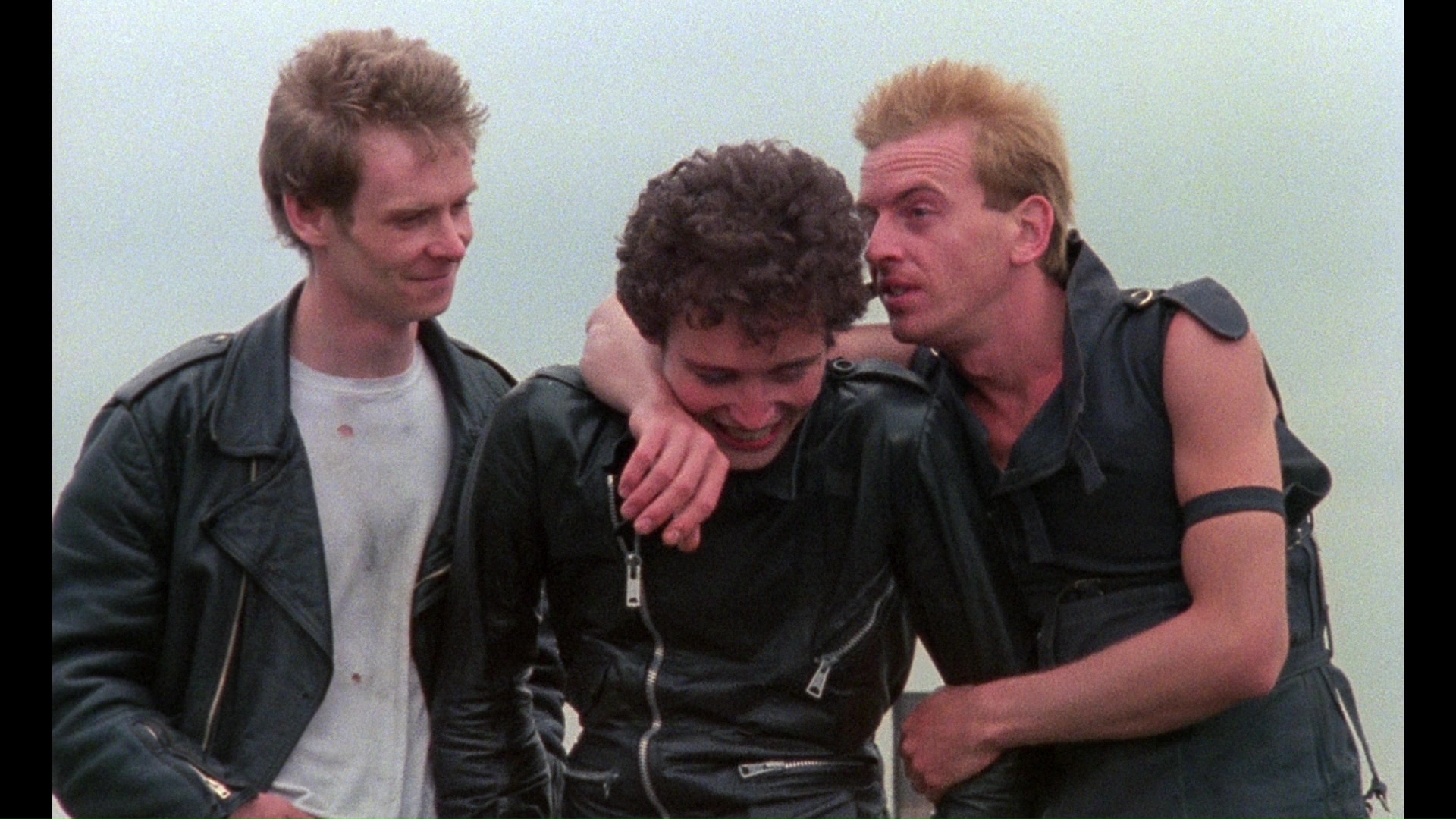 Early video editions (especially the one from Mystic Fire) of Jubilee were a smeary mess, but here the vivid color schemes remain in check. The first DVD option to hit the market from the UK's DVD Second Sight offers a generally pleasing fullscreen edition with some element damage (including one nasty splice an hour into the film) evident from time to time, and the Super 8 bits (including one memorable set piece involving a ballerina and a lot of fire) looking appropriately grainy and worn. The disc also contains a "Face to Face" interview with Jarman running a little under half an hour; shot one year before the director's death, this piece offers a thumbnail sketch of his artistic philosophy and makes for an interesting introduction to his work for newcomers wary of jumping into the deep end with the films themselves. More lavish is the American disc from Criterion, which presents the film in a sharp, appreciably more pristine letterboxed edition which adds slight information to the sides while trimming about as much extraneous space from the top and bottom. (On an anamorphic television which crops 1.66:1 transfers to 1.78:1, however, there's a lot of tight headroom, so adjust accordingly.) The biggest extra is a half hour documentary, "Jubilee: A Time Less Golden," created by actor Spencer Leigh (who jumped on the Jarman ship with 1986's more sedate Caravaggio). Runacre, Willcox, film writer Tony Rayns, production designer Christopher Hobbs, and filmmakers John Maybury and Lee Drysdale offer their memories and observations about Jarman and this film in particular. Looking warm and wholesome, the charmingly accented Willcox scores the most memorable points as she recalls her trepidation as an unskilled actress thrown into such a challenging project. Also included is a short 8mm film which later became the ballerina-and-scissors vision in the film (though minus the feature's nudity), a lengthy gallery of black and white continuity snapshots, various stills and scrapbook tidbits, and the raucous original trailer, as well as historical notes by Jarman scholar Tony Peake. The disc also offers optional English subtitles for those having trouble with the hodgepodge of accents.
Early video editions (especially the one from Mystic Fire) of Jubilee were a smeary mess, but here the vivid color schemes remain in check. The first DVD option to hit the market from the UK's DVD Second Sight offers a generally pleasing fullscreen edition with some element damage (including one nasty splice an hour into the film) evident from time to time, and the Super 8 bits (including one memorable set piece involving a ballerina and a lot of fire) looking appropriately grainy and worn. The disc also contains a "Face to Face" interview with Jarman running a little under half an hour; shot one year before the director's death, this piece offers a thumbnail sketch of his artistic philosophy and makes for an interesting introduction to his work for newcomers wary of jumping into the deep end with the films themselves. More lavish is the American disc from Criterion, which presents the film in a sharp, appreciably more pristine letterboxed edition which adds slight information to the sides while trimming about as much extraneous space from the top and bottom. (On an anamorphic television which crops 1.66:1 transfers to 1.78:1, however, there's a lot of tight headroom, so adjust accordingly.) The biggest extra is a half hour documentary, "Jubilee: A Time Less Golden," created by actor Spencer Leigh (who jumped on the Jarman ship with 1986's more sedate Caravaggio). Runacre, Willcox, film writer Tony Rayns, production designer Christopher Hobbs, and filmmakers John Maybury and Lee Drysdale offer their memories and observations about Jarman and this film in particular. Looking warm and wholesome, the charmingly accented Willcox scores the most memorable points as she recalls her trepidation as an unskilled actress thrown into such a challenging project. Also included is a short 8mm film which later became the ballerina-and-scissors vision in the film (though minus the feature's nudity), a lengthy gallery of black and white continuity snapshots, various stills and scrapbook tidbits, and the raucous original trailer, as well as historical notes by Jarman scholar Tony Peake. The disc also offers optional English subtitles for those having trouble with the hodgepodge of accents.
